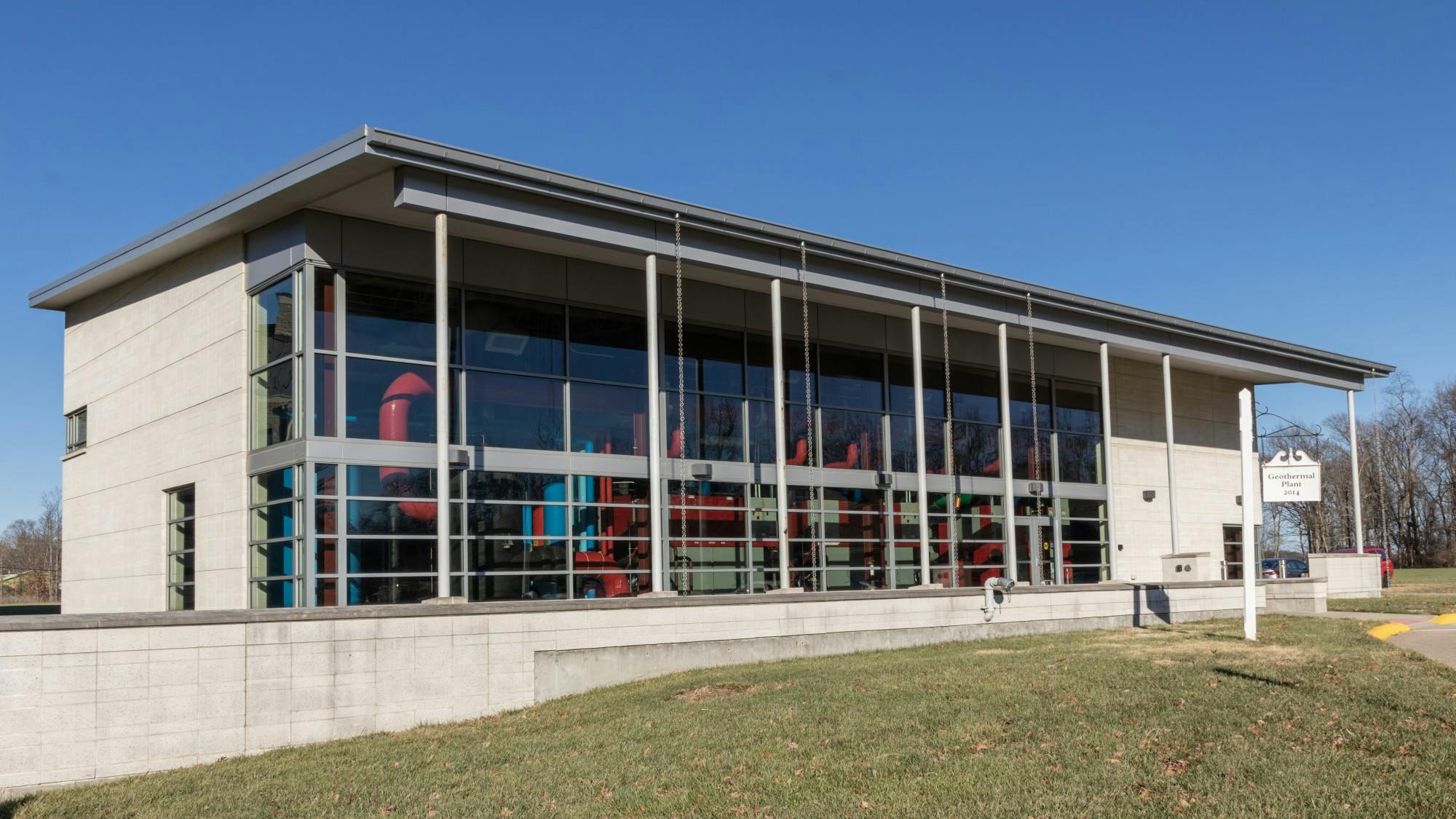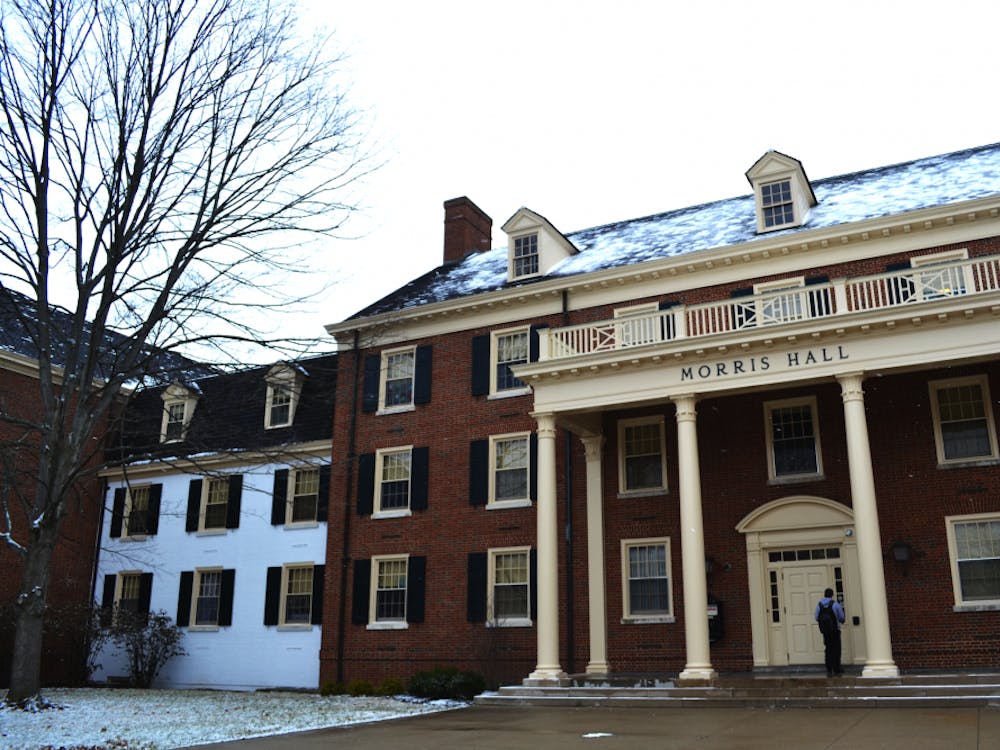With the 2022 fall semester coming to an end, Miami University is just three years away from its goal of converting large academic buildings to utilize geothermal energy by 2026.
Geothermal energy is only a part of Miami’s sustainability efforts, which have been in the works since 2008. Olivia Herron, Miami’s director of sustainability, helps oversee this project, and other aspects of Miami’s work to go green.
“Since 2008, we’ve been making a very intentional effort to reduce [our energy usage],” Herron said. “We’re not necessarily going to convert every single building on campus to geothermal, but we are trying to convert as many of the large buildings on campus to geothermal as possible.”
Geothermal energy is a form of renewable energy which uses the temperature of the ground to heat and cool water. This water is then used for heating and cooling buildings on campus, which is more sustainable than the typical burning of fossil fuels.
“Geothermal is unique in that we drill very deep wells, and we cycle water into the ground to heat or cool that water,” Herron said. “The ground at that depth [about 400 feet] is a constant temperature throughout the year, so by sending water out in the summer, it’s cooled down to ground temp. In the winter when we send out the water, it’s heated compared to outside temperatures.”
The Western geothermal site is the first on Miami’s campus, which was established as part of a Utility Master Plan in 2012. This plan outlines Miami’s sustainability goals through 2026.
“It kind of lays out how we’re gonna switch to simultaneous heating and cooling and to geothermal in different parts of campus,” Herron said.
For its next geothermal site, Miami is looking at North Campus to install the necessary wells under Millett Hall’s parking lot.
“We’re looking to put somewhere around 1,200 to 1,300 new wells,” Herron said. “But North Campus is already on a heating and cooled water system, so … it’s already set up that the transition to geothermal will be more smooth than we originally started and were transitioning from steam to geothermal.”
Geothermal energy is particularly useful to Miami because of the climate of Ohio. The change in all four seasons allows for the ground to provide both heat and cooling to water, which is then able to heat and cool the buildings it is intended to supply.

The Western geothermal site is the first on Miami’s campus, which was established as part of a Utility Master Plan in 2012. This plan outlines Miami’s sustainability goals through 2026.
“The biggest consumer of energy for campus is heating and cooling buildings, so geothermal is an opportunity to move to renewables for how we heat and cool buildings, so that is why we started there,” Herron said.
Enjoy what you're reading?
Signup for our newsletter
An additional responsibility of Miami’s sustainability committee is self-reporting to the Sustainability Tracking, Assessment, and Rating System (STARS). In February 2021, Miami received a gold rating for its sustainability efforts. The scale ranges from bronze to platinum, which is Miami’s goal. The next report is due in May 2025.
“Our first reports were silver in 2016,” Herron said. “This past report we submitted in February, we were graded in the high gold category, so we have aspirations to hopefully achieve platinum in this next reporting round in 2025.”
In order to achieve this, Herron’s department does work to investigate what would earn an increase in score, which encompasses more than reduced greenhouse gas emissions and energy use.
“We earn points for things like our EcoReps program or IES (Institute for the Environment and Sustainability) earns us points for the number of majors, co-majors and master’s programs we offer in the sustainability realm,” Herron said. “STARS is, I would say, our more comprehensive report, but that is on a three-year cycle.”
Lauren McCann, a sophomore primary education major, is on the leadership team of EcoReps, one of Miami’s largest sustainability organizations on campus and an element of Miami’s high-gold STARS ranking.
“EcoReps focuses on sustainability within residence halls. We partner with the Office of Residence Life,” McCann said. “We do a lot with specialty recycling … inside the dorms for non-traditional recyclables to be recycled [which includes] grocery bags, Brita filters, batteries.”
In addition to specialty recycling, McCann and her team send out weekly “Eco Facts” to each residence hall via email, which McCann describes as “sustainability fun facts.” EcoReps also track the waste produced by each residence hall to ensure it is being disposed of properly. On the weekends, club members will sort through the waste of residence halls to sort out potential recyclables.
EcoReps meets on Mondays from 6 p.m. to 7 p.m. in Upham Hall 36
5 and is one of many organizations on campus working in combination with administrative efforts toward a more sustainable future.
“I think that there's a lot that needs to be done, but there's definitely a lot that has already been put into the works,” McCann said. “I would say sustainability is something that affects everyone and as a university, we should be encouraging our students to take action.”
An additional source of education Miami offers is found within the Sustainability Canvas course, which was published in February 2022. Janet Hurn, senior director of the E-campus for Miami’s regional campuses and Susan Meikle, a writer and editor for University News and Communications, helped develop the course. It covers several aspects of sustainability, both in and outside of Miami.
“A few of the main topics are climate change, what is Miami doing with climate change … particularly energy wise,” Meikle said.
In addition, a section on Miami’s recycling partner, Rumpke, is also provided.
“We want to highlight that [Rumpke recycling] because they’re very innovative and they’re the ones handling [waste] after students discard it,” Hurn said. “We want to show the whole pathway so as to show that it does make a difference and there’s innovative people throughout the chain that put these materials back into production on the recycling side.”
The Canvas course is accessible to all students interested and only takes 45 minutes to an hour to complete.
“A goal is to try to get it to become something students might do, for instance, during summer orientation, or in their UNV 101,” Meikle said.
While the Canvas course discusses Miami’s sustainability efforts, the impact spans beyond Oxford.
“[Miami is] significantly impacting the world by not only practicing sustainability processes and climate recovery and support, but also teaching the student that that’s important … so when they leave and go out to their communities, they can do the same thing,” Hurn said.
The course is designed to resonate with students, and hopefully offer a new perspective in sustainability.
“We have this survey [in the course] that we give at the beginning, and then we hope everyone will take it at the end,” Hurn said. “And we did show a change of attitude from that initial group.”
The data from the survey is also a contributing factor to Miami’s STARS report score.
Before its next STARS report is due in 2025 and the Utility Master Plan expires in 2026, Miami plans to expand its sustainability committee to focus beyond data collection and reporting.
“A new goal I would say for the role is to also focus more external facing,” Herron said. “We’re trying to transition to have more of an outreach focus, especially with the work of the Climate Action Task Force … we really want to keep students, faculty, staff and alums informed in our planning process.”
Miami also intends to become a Net-Zero institution, meaning that Miami’s production of carbon emissions will equal the amount removed from the atmosphere, ultimately canceling out. The sustainability committee will also focus on educating students about environmental science and sustainability. The re-routing of Butler County Regional Transit Authority (BCRTA) buses in the next academic year should play a large role in this, as the bus line intends on becoming more efficient to ride.
“We just want to keep students aware that it’s something we’re working on. It’s something we care about as an institution … so I’m very excited to see where that plan is going to take us,” Herron said. “We have every intention to be a leader in sustainability in higher ed.”
Further information on Miami's energy consumption trends can be found here.




